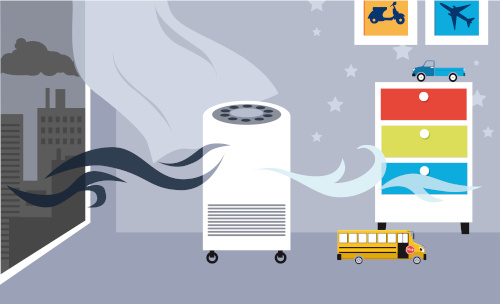
The COVID-19 pandemic has presented education with challenges and opportunities. On one hand, the massive move to digital learning and one-to-one programs has accelerated districts’ plans for edtech adoption. On the other, state and district leaders must ensure safe learning environments as schools strive to remain open—and paying attention to indoor air quality is critical.
Mandatory mask mandates, social distancing, routine handwashing, hybrid learning—schools are juggling a number of safety protocols. And while these steps are important, COVID-19 is airborne, meaning air purification and indoor air quality are of the utmost importance.
Providing healthier air can significantly reduce the anxiety levels of students, faculty, and staff—and students who are less stressed are able to learn better.
A layered approach to protection is recommended and can help school leaders ensure safe learning environments, according to Brooke Pitcher, Director of Facilities at Marin Country Day School, and Kelly Hayes of Surgically Clean Air.
Air quality was always a concern at Pitcher’s school, which has a mix of buildings from mid-1950’s and new buildings. But the pandemic escalated that concern.
“It was never on the forefront as far as an urgent concern, then obviously, like everybody else, the pandemic hit and we were swamped,” he said during an eSchool News webinar. “All of a sudden that secondary air quality conversation immediately came to the forefront.
A layered approach to clean and healthy air, focusing on air purification and indoor air quality, includes:
Using portable HEPA fans and filtration systems to enhance air cleaning
Using ultraviolet germicidal irradiation as a supplemental treatment
Using filters with higher MERV ratings
Realizing that HEPA filters are effective in removing 99.97 percent (or better) of all particle sizes
And while HVAC improvements and attention to indoor air quality are important, school leaders also need to focus on the classroom at the “source” of potential infections and outbreaks. Portable air cleaners give schools flexibility to increase air purification whenever and wherever needed.
Each school should evaluate its specific needs based on its number of classrooms, shared areas, capacity, etc.
Watch the full eSchool News webinar for more.

